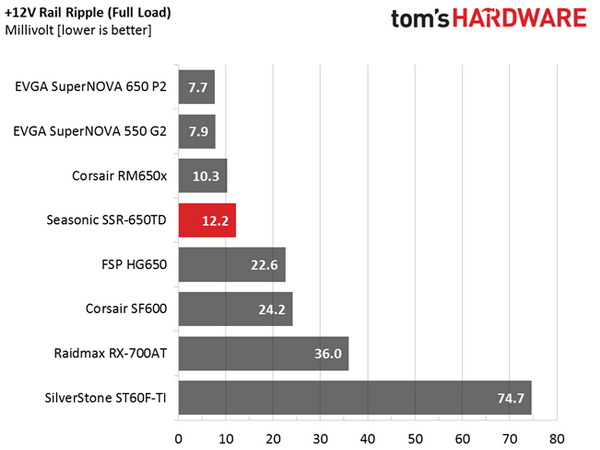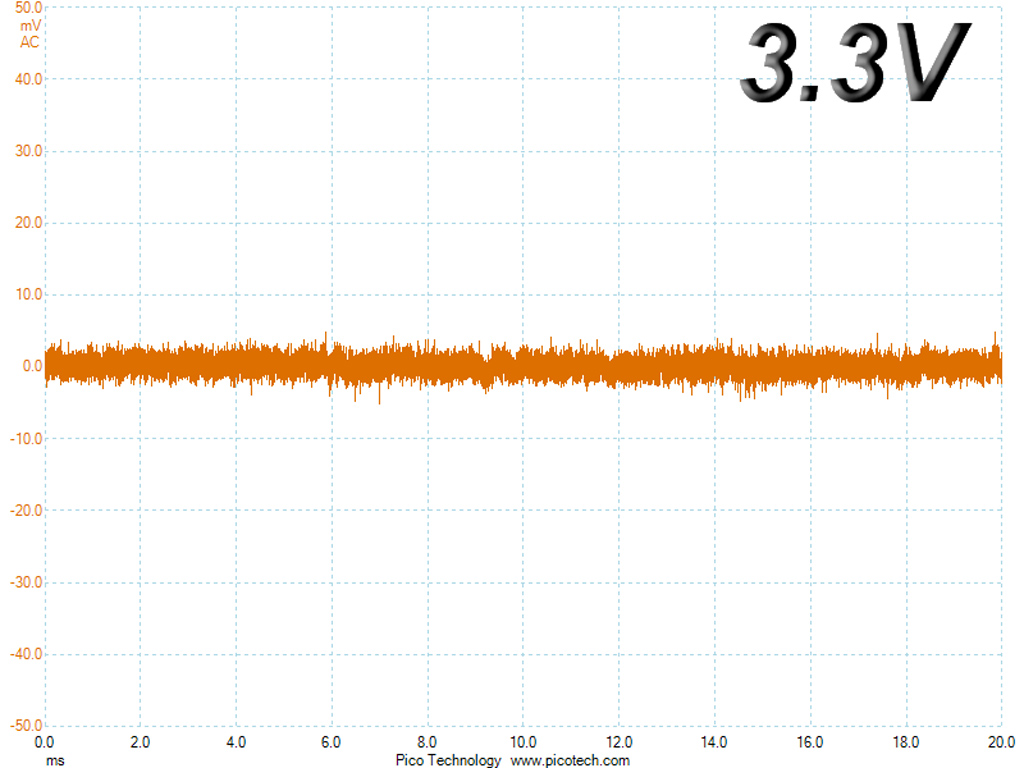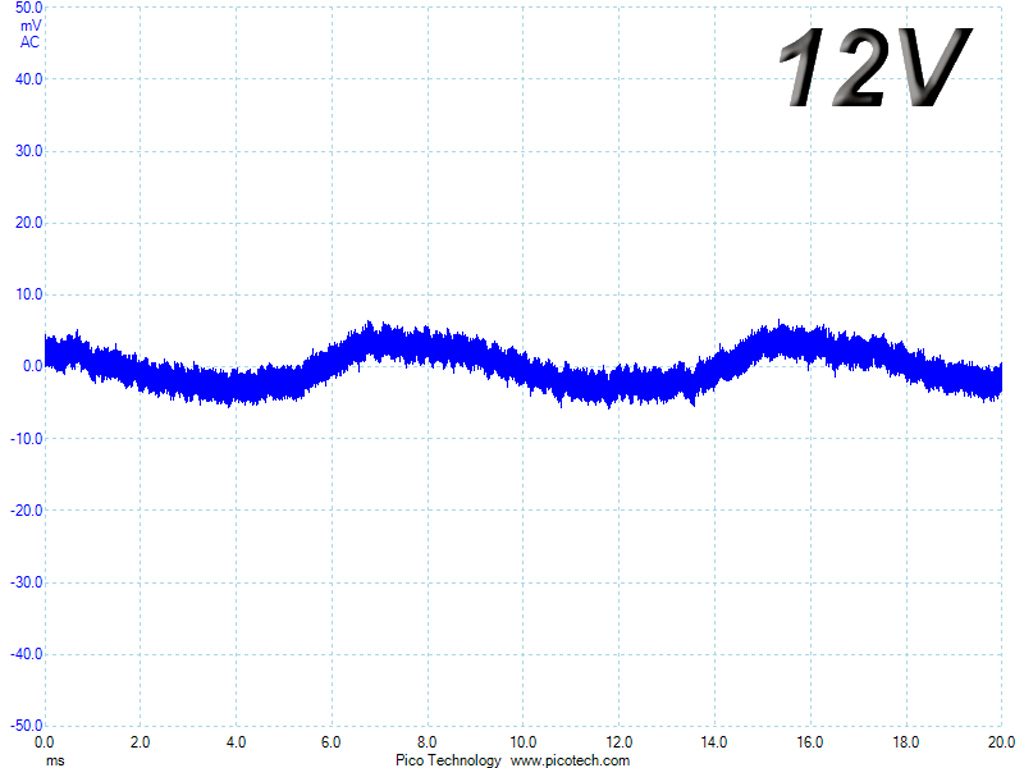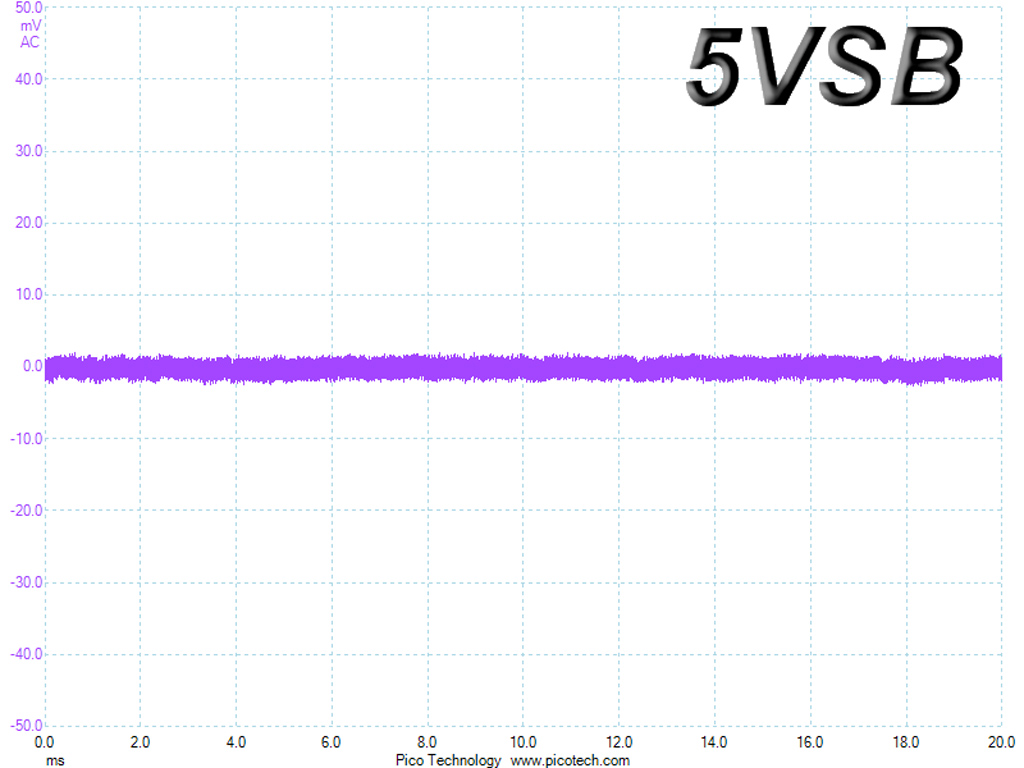Seasonic Prime Titanium 650W PSU Review
Seasonic jumps onto the 80 PLUS Titanium wagon with three new units that belong to its Prime family. The 650 W model is under our scope today. Besides high efficiency, it also offers great performance, quiet operation, and nice looks.
Why you can trust Tom's Hardware
Ripple Measurements
To learn how we measure ripple, please click here.
The following table includes the ripple levels we measured on the SSR-650TD's rails. The limits, according to the ATX specification, are 120 mV (+12V) and 50 mV (5V, 3.3V and 5VSB).
| Test | 12V | 5V | 3.3V | 5VSB | Pass/Fail |
|---|---|---|---|---|---|
| 10% Load | 7.1 mV | 5.0 mV | 6.1 mV | 3.5 mV | Pass |
| 20% Load | 9.2 mV | 5.4 mV | 6.1 mV | 3.8 mV | Pass |
| 30% Load | 10.0 mV | 5.5 mV | 6.7 mV | 4.2 mV | Pass |
| 40% Load | 10.1 mV | 5.5 mV | 6.8 mV | 3.7 mV | Pass |
| 50% Load | 10.2 mV | 5.6 mV | 6.6 mV | 3.7 mV | Pass |
| 60% Load | 10.6 mV | 5.6 mV | 6.9 mV | 4.1 mV | Pass |
| 70% Load | 9.5 mV | 6.2 mV | 7.8 mV | 4.6 mV | Pass |
| 80% Load | 9.9 mV | 7.4 mV | 8.3 mV | 5.4 mV | Pass |
| 90% Load | 10.6 mV | 7.7 mV | 10.5 mV | 5.6 mV | Pass |
| 100% Load | 12.2 mV | 8.0 mV | 11.7 mV | 6.2 mV | Pass |
| 110% Load | 13.3 mV | 8.0 mV | 11.9 mV | 7.1 mV | Pass |
| Cross-Load 1 | 8.9 mV | 6.8 mV | 8.2 mV | 3.9 mV | Pass |
| Cross-Load 2 | 11.9 mV | 7.1 mV | 11.3 mV | 5.3 mV | Pass |




Ripple suppression is amazing, and made more impressive by the fact that this performance is achieved without any extra filtering caps on the modular cables. Seasonic's engineers did wonders with this platform, proving that they're able to offer ripple-proof designs.
Ripple Oscilloscope Screenshots
The following oscilloscope screenshots illustrate the AC ripple and noise registered on the main rails (+12V, 5V, 3.3V and 5VSB). The bigger the fluctuations on the screen, the bigger the ripple/noise. We set 0.01 V/Div (each vertical division/box equals 0.01 V) as the standard for all measurements.
Ripple At Full Load




Ripple At 110-Percent Load




Ripple At Cross-Load 1




Ripple At Cross-Load 2




Get Tom's Hardware's best news and in-depth reviews, straight to your inbox.
Current page: Ripple Measurements
Prev Page Transient Response Tests Next Page Performance, Performance Per Dollar, Noise And Efficiency Ratings
Aris Mpitziopoulos is a contributing editor at Tom's Hardware, covering PSUs.